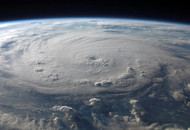Preparing Your HVAC System for Hurricanes and Severe Storms: A Nationwide Guide
Oct 8th 2024
Hurricanes, tropical storms, and other severe weather events can cause significant damage to HVAC systems across the U.S. Whether you're dealing with the aftermath of hurricanes in coastal areas or severe thunderstorms and tornadoes in inland regions, taking steps to protect your HVAC system can save you from expensive repairs and system failures.
Pre-Storm Preparation: A Key Step to Protecting Your HVAC System
No matter where you live, it's essential to have a plan in place before a storm hits. Extreme weather events bring high winds, heavy rain, and power surges, all of which can wreak havoc on HVAC systems.
1. Power Down Your HVAC System
One of the most critical steps to take before a storm is to turn off your HVAC system. This can prevent damage from power surges, which often occur when power is lost and restored unpredictably during a storm. Power surges are responsible for over 20% of HVAC system failures following severe weather.
Shutting off your HVAC at the circuit breaker also ensures that the system won’t be running when winds or heavy rain might cause damage to the outdoor unit.
2. Secure the Outdoor Unit
Strong winds can easily turn everyday objects into projectiles. Loose items like patio furniture, branches, or outdoor toys can become airborne during a storm and damage your HVAC unit. Wind speeds from hurricanes and severe storms can reach over 150 mph, capable of damaging unprotected outdoor units.
To prevent this, secure your HVAC system with storm straps or heavy-duty covers. Clearing the area around your unit of any loose objects will further reduce the risk of damage.
3. Elevate the Unit to Avoid Flooding
For homes located in flood-prone areas, especially along coastal regions like the Gulf and Atlantic coasts, flooding poses a significant threat. If your outdoor HVAC unit is at ground level, consider raising it on a platform or installing it at a higher elevation to avoid water damage. Flooding can short out electrical components and lead to extensive damage, which could require a full system replacement.
During the Storm: Prioritize Safety and HVAC Protection
During severe weather events, safety should always come first. Keeping your HVAC system off and protected ensures that it won't sustain further damage during the storm.
1. Keep the System Turned Off
Resist the urge to turn your HVAC system back on until the storm has completely passed. Even if the weather seems to calm temporarily, turning the system back on could expose it to power surges or cause short circuits. Power surges during storms are responsible for more than 30% of post-storm HVAC failures.
2. Monitor for Flooding
If your area is experiencing heavy rain or storm surge, be mindful of flooding around your home and HVAC unit. Water intrusion can cause extensive damage to the system's electrical components, and running the system while it’s wet increases the risk of permanent damage.
Post-Storm Inspection: Ensuring Your System Is Safe to Restart
Once the storm has passed, follow these steps to ensure your HVAC system is safe to use:
1. Perform a Visual Inspection
Before restarting your HVAC system, check the outdoor unit for any visible damage. Look for dents, missing panels, or debris lodged in the system. Nearly 40% of storm-related HVAC damage results from wind-borne debris. Clear away any debris from around the unit to ensure proper airflow.
2. Wait for the Area to Dry
If your HVAC unit has been exposed to standing water or heavy rain, wait until the area is completely dry before turning the system back on. Restarting the system too soon can cause internal damage, such as electrical short-circuits or further corrosion to the components.
3. Schedule a Professional Inspection
After any significant storm or hurricane, it’s recommended to have your HVAC system inspected by a professional. Even if the system appears to be in good condition, internal damage might not be immediately visible. Hidden damage from storms accounts for about 35% of post-storm HVAC system failures. A professional technician can check for refrigerant leaks, electrical damage, and other issues that might affect the system’s performance.
Long-Term Solutions for Storm-Prone Areas
For homeowners in areas that experience frequent hurricanes, tornadoes, or severe storms, investing in durable, storm-resistant HVAC equipment can save money and reduce downtime after a storm.
1. Install Weather-Resistant Systems
Modern HVAC units are designed with weather resilience in mind. Models that feature reinforced housing, corrosion-resistant materials, and weatherproof components are more likely to survive a severe storm. These systems can reduce the risk of storm-related damage by up to 50%.
2. Surge Protection and Backup Power
Installing a surge protector for your HVAC system can help prevent damage from electrical surges, one of the most common causes of HVAC failure during a storm. Additionally, having a backup generator can ensure that your system remains operational even if the power goes out for an extended period.
Conclusion: Protecting Your HVAC System in Severe Weather
Severe weather is an inevitable part of life in many regions of the United States, from hurricanes along the Gulf and Atlantic coasts to tornadoes and thunderstorms in the Midwest. Taking proactive steps to secure your HVAC system before, during, and after a storm can minimize damage, extend the life of your equipment, and reduce costly repairs.
By turning off your system before the storm, securing the outdoor unit, and having a professional inspect the system afterward, you can help ensure your HVAC system stays functional, no matter what Mother Nature throws your way.





